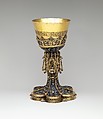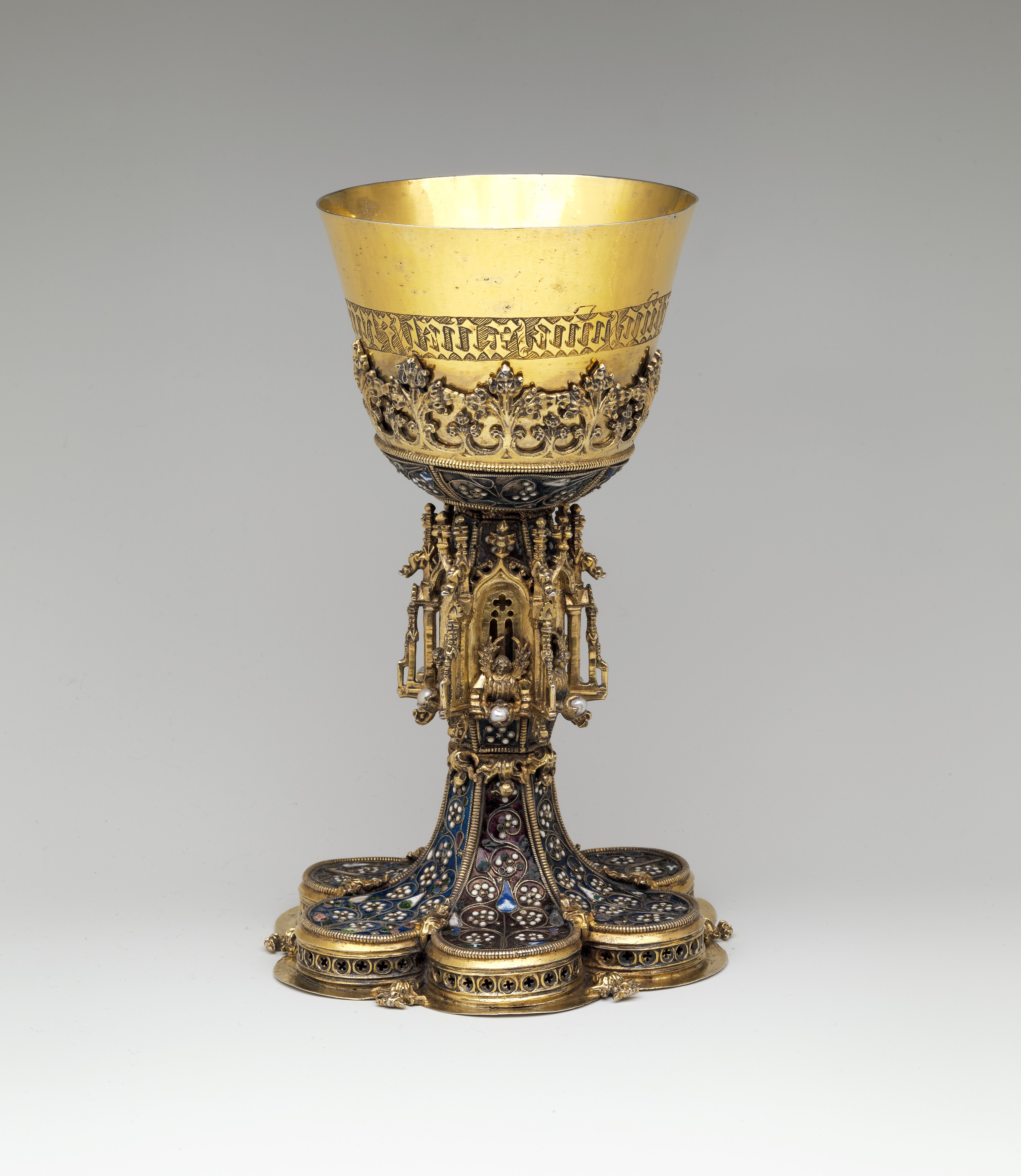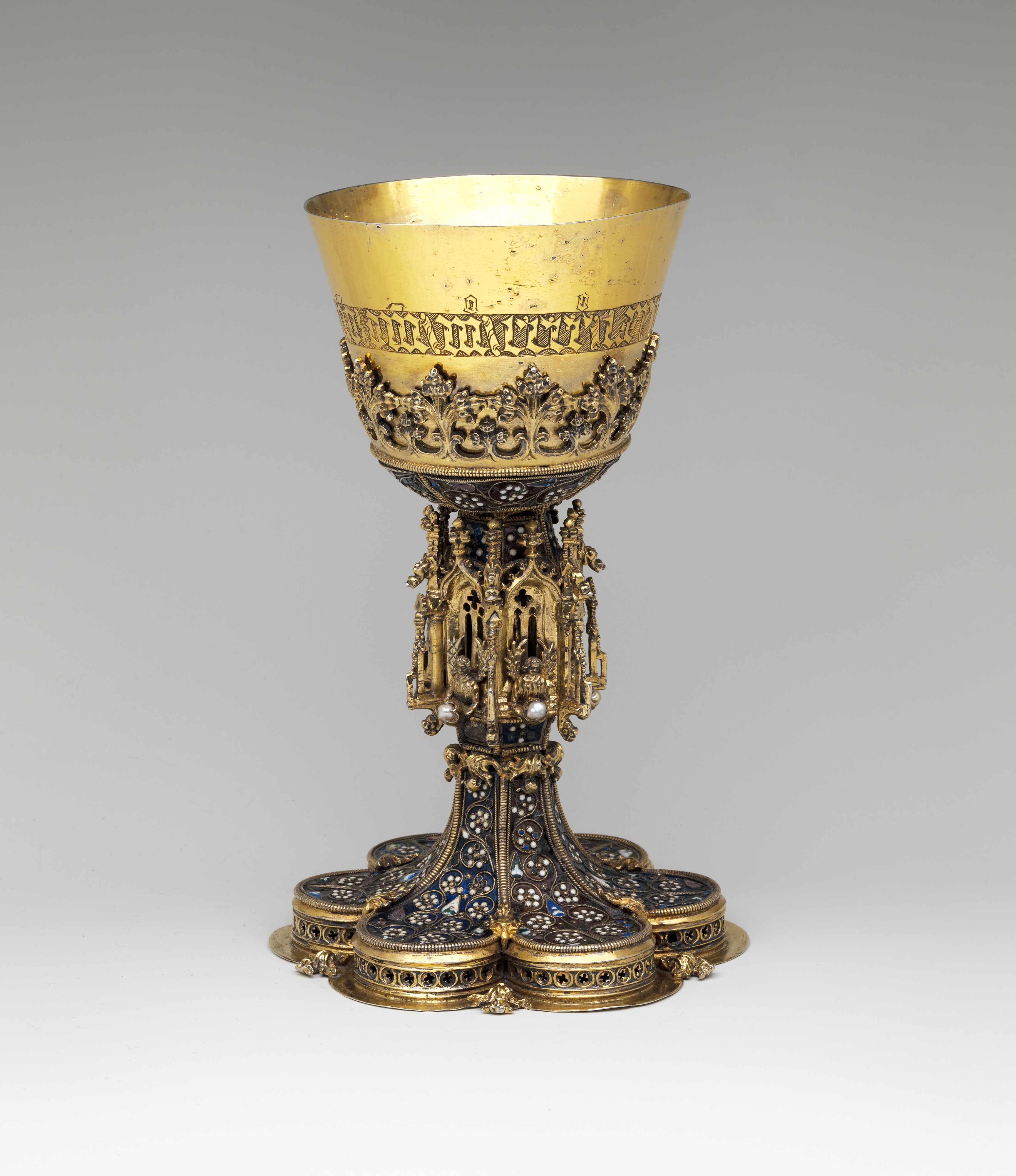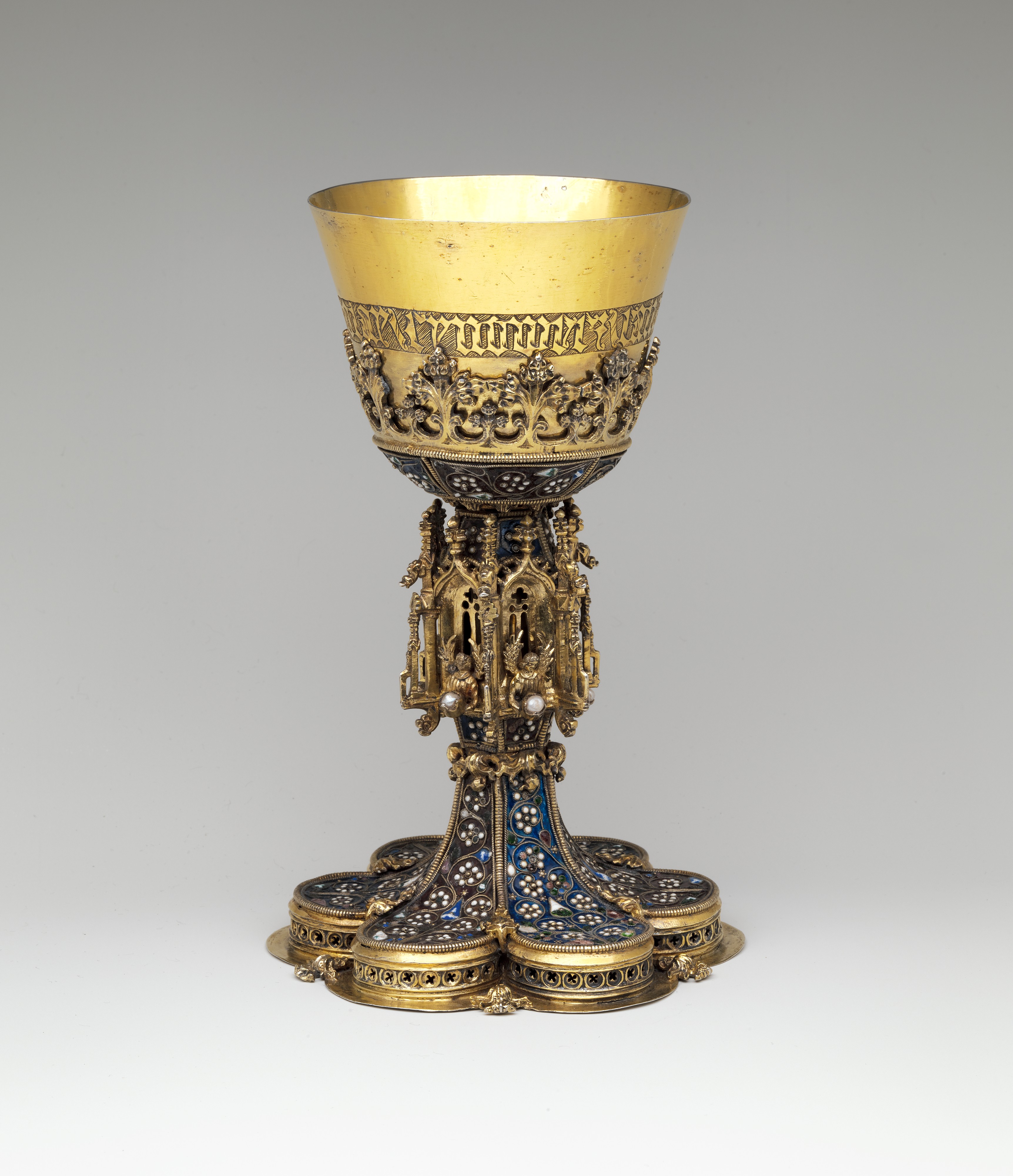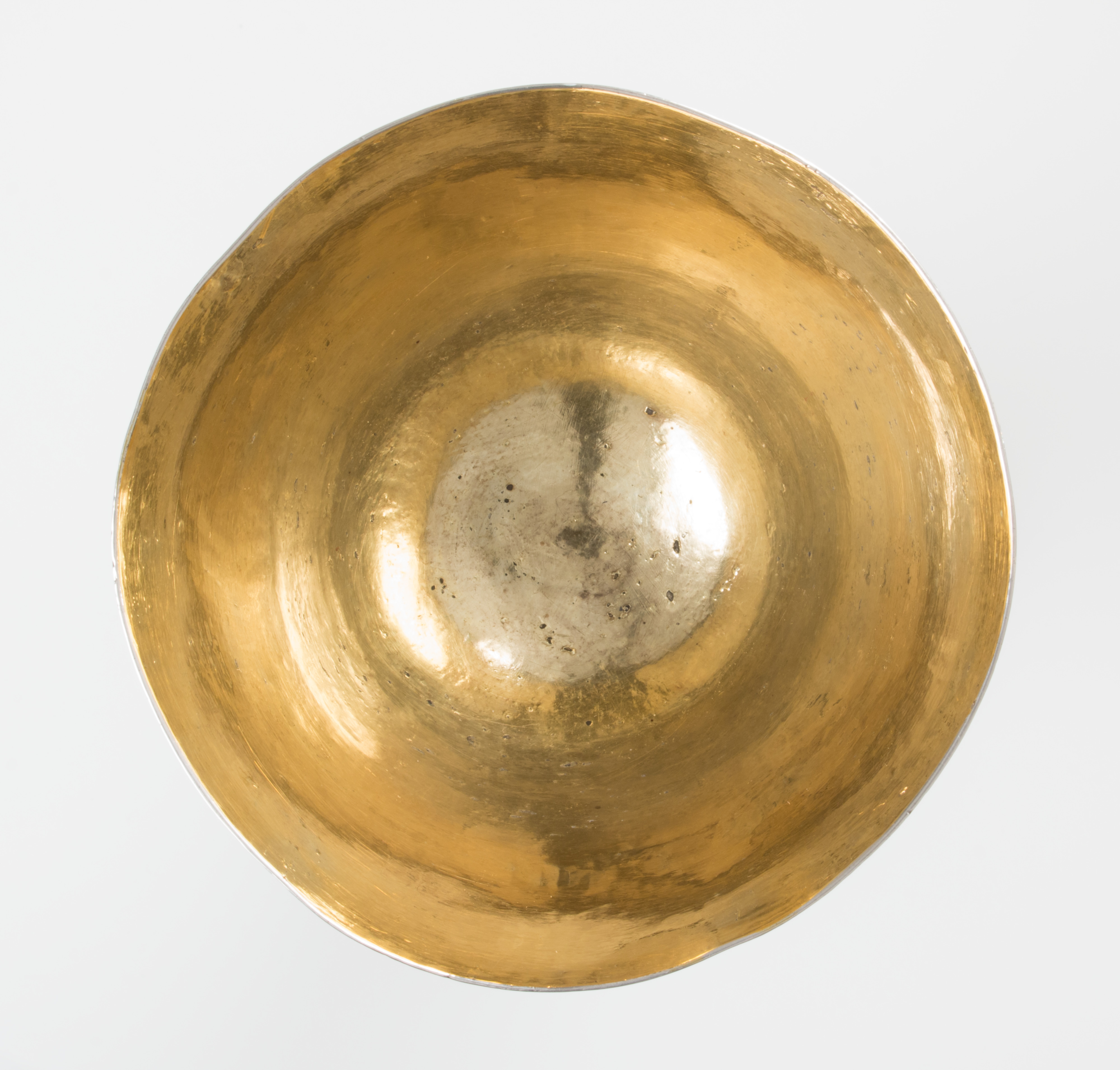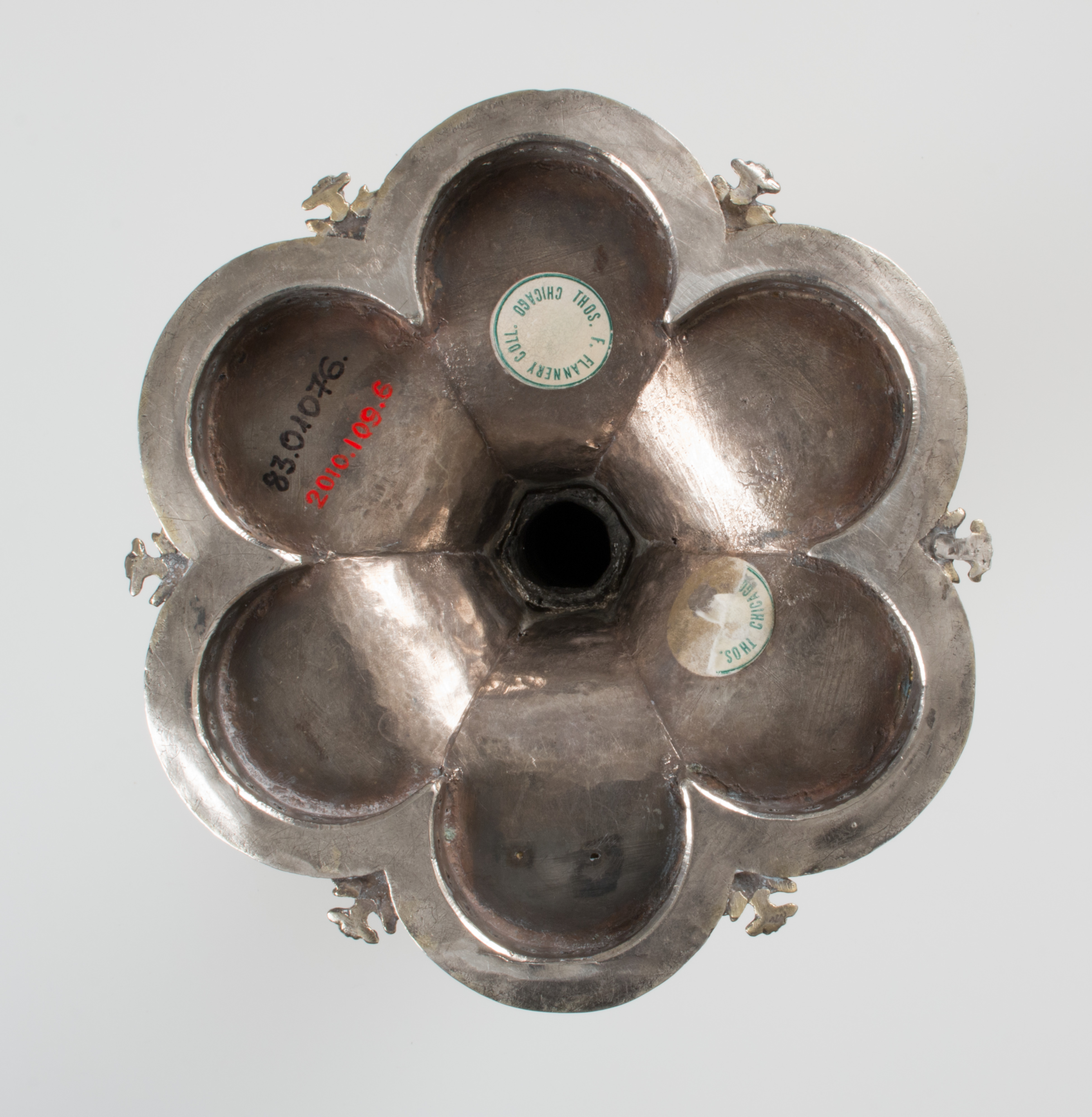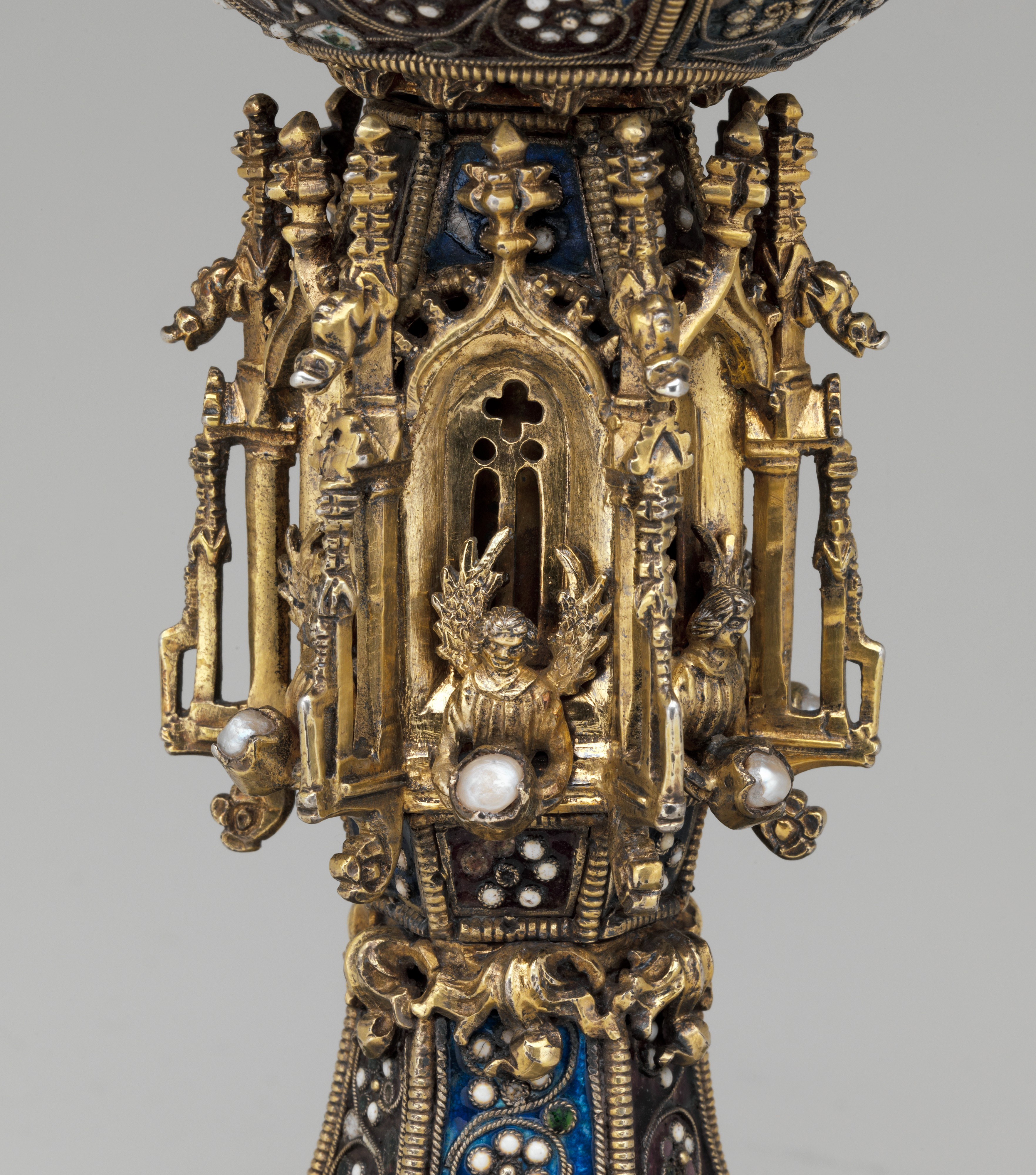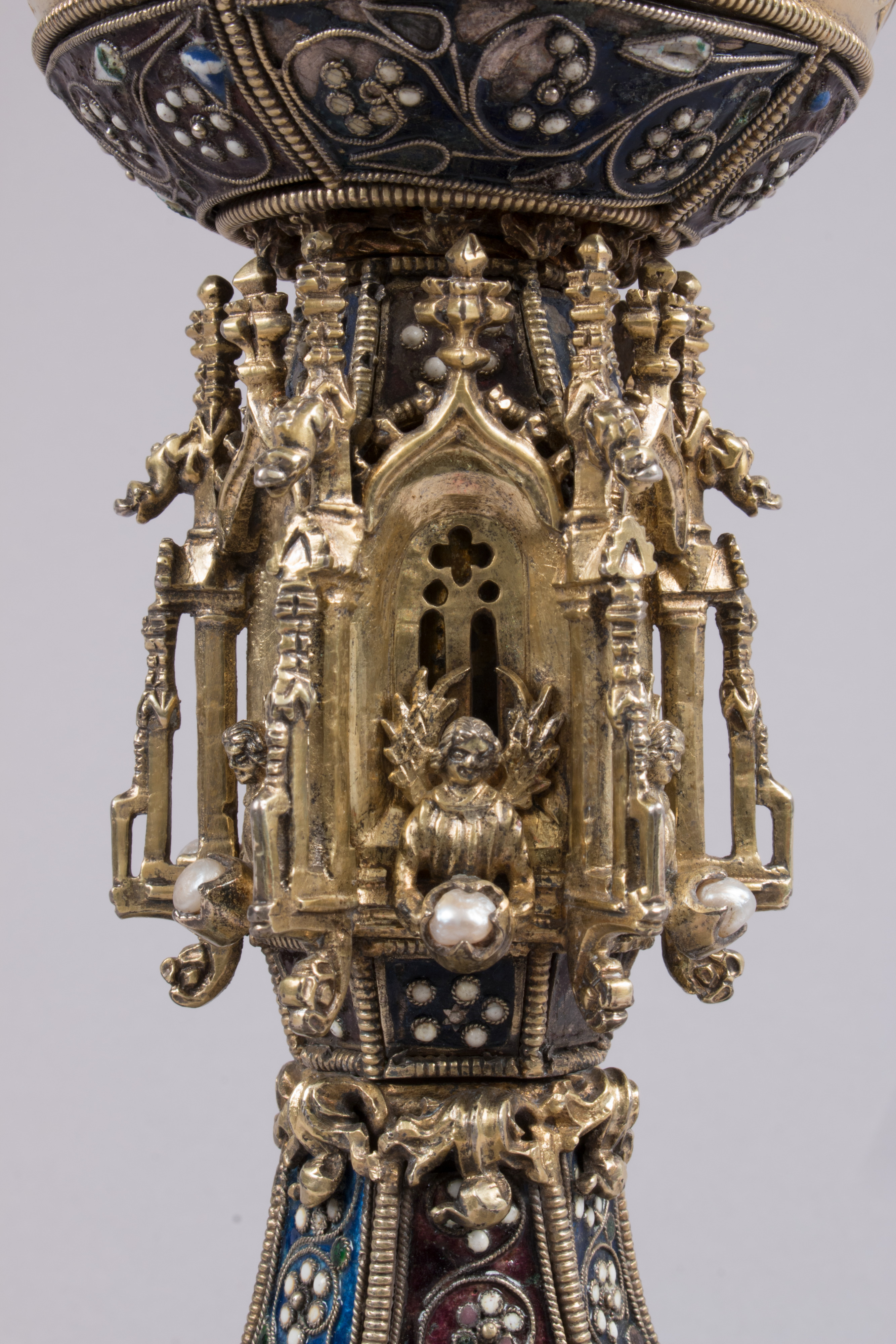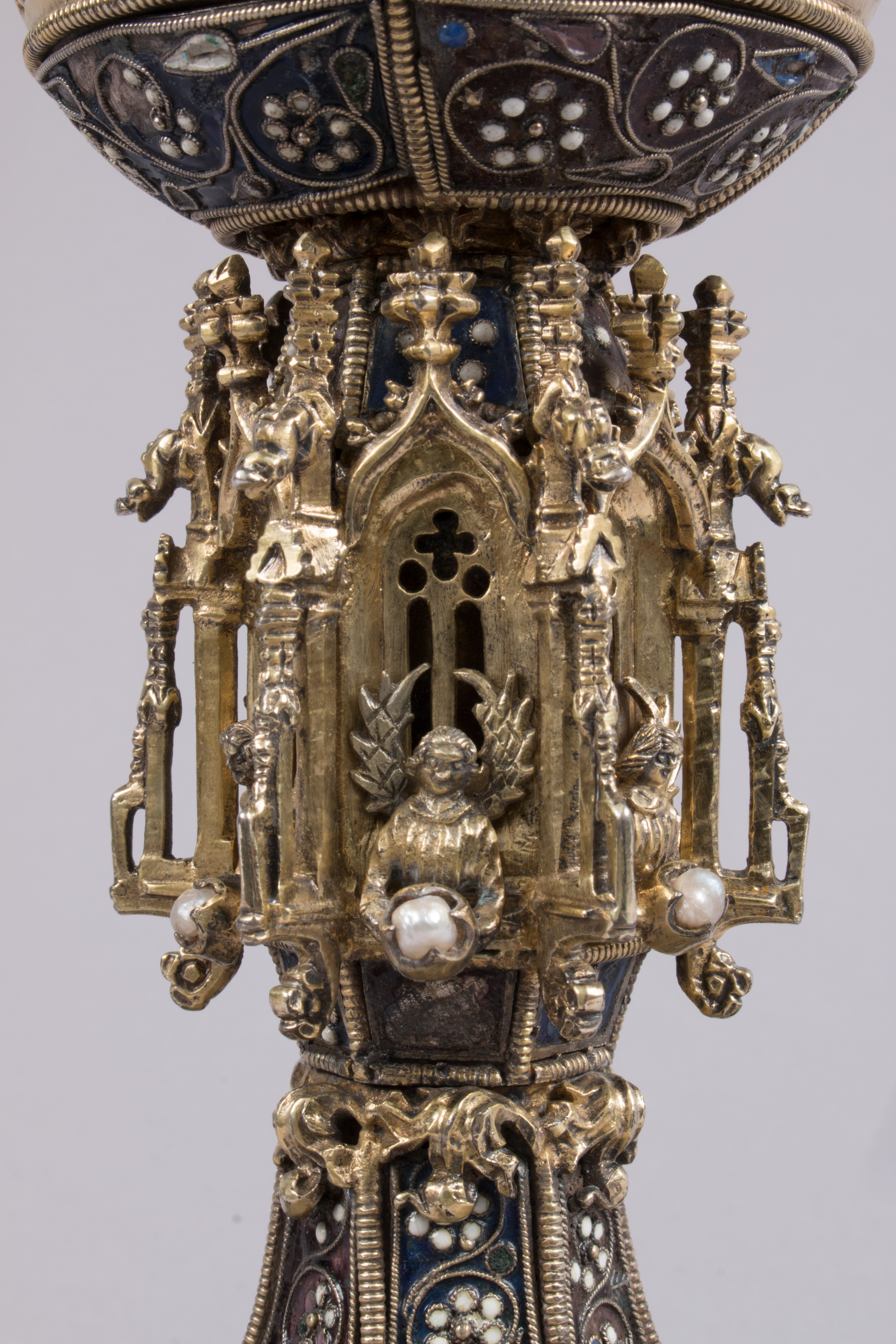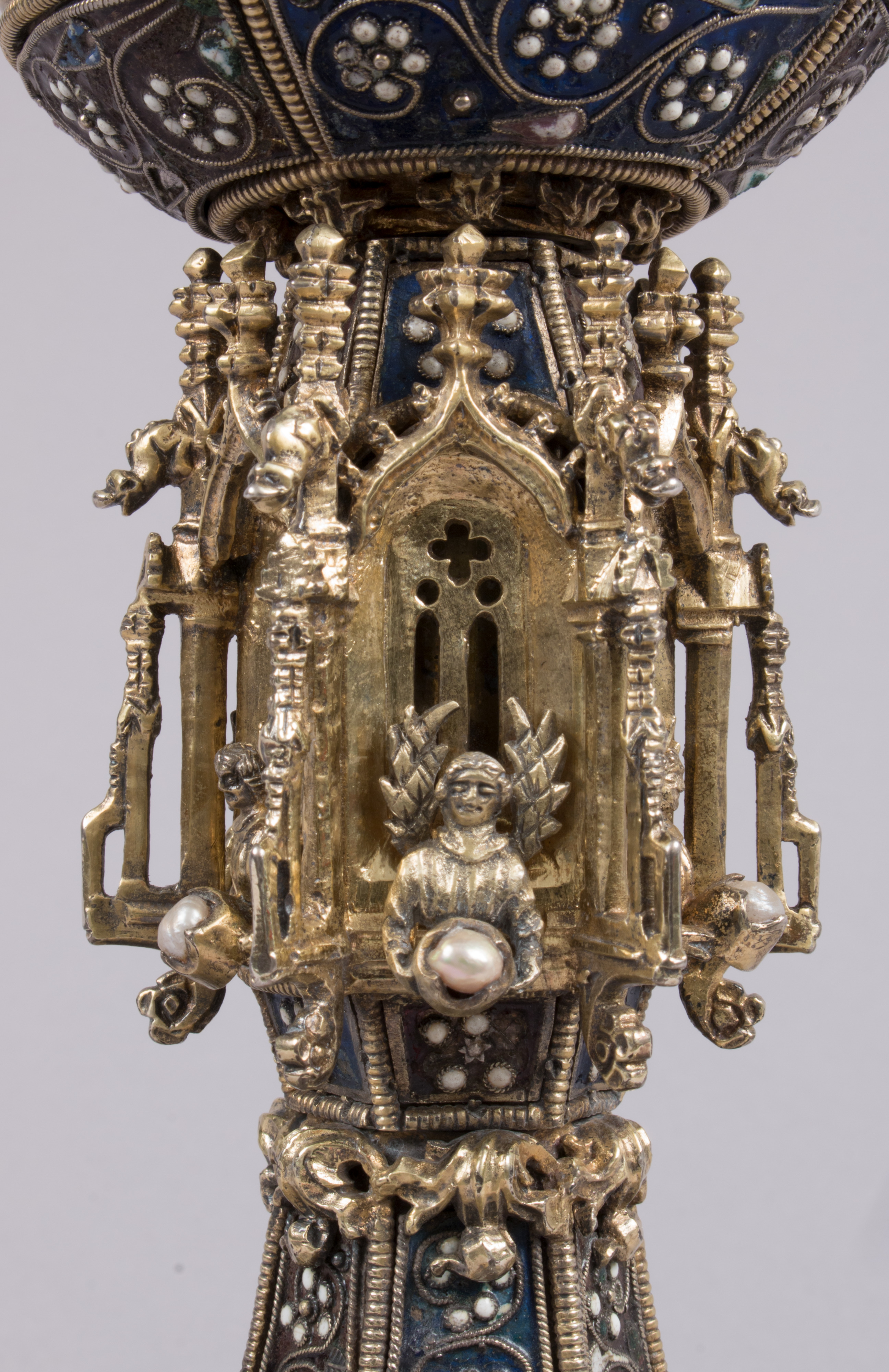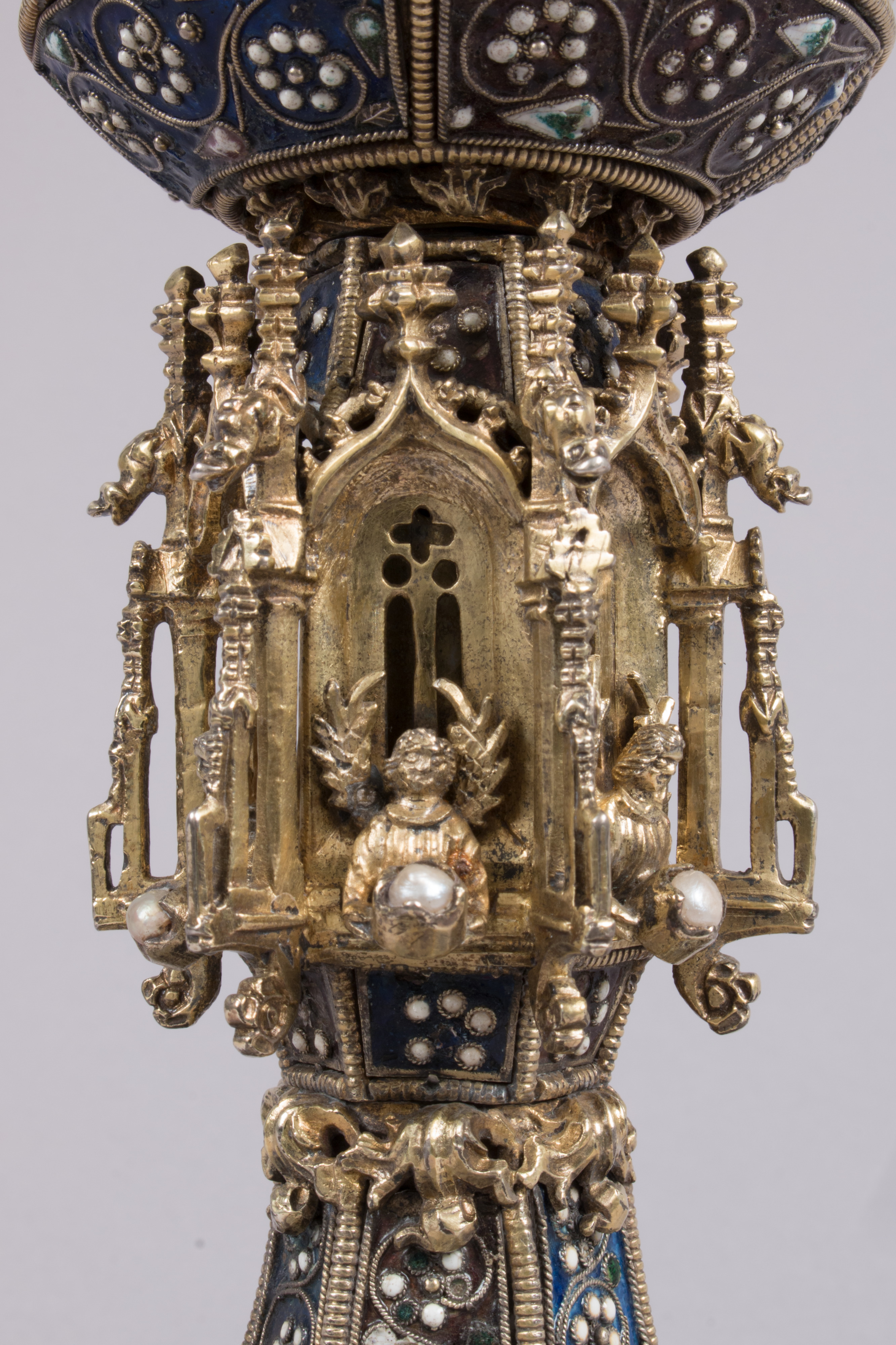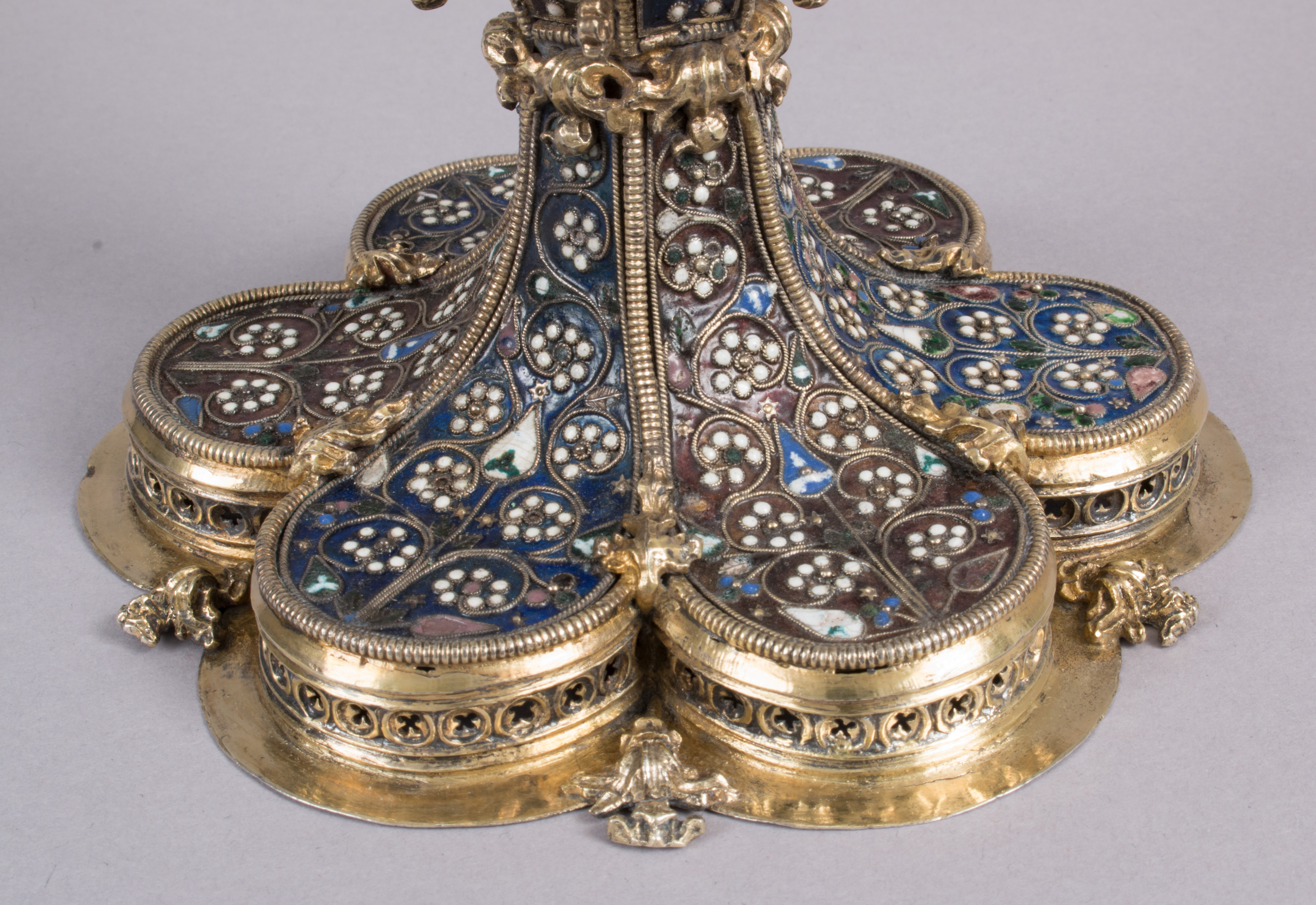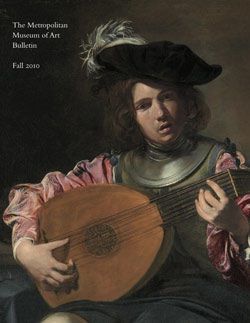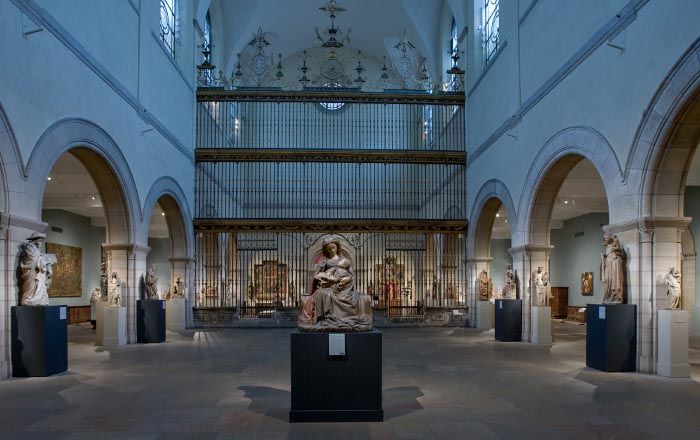Chalice
High-ranking church officials would have used this flamboyant Gothic chalice on special occasions, and the object’s colorful and glittering appearance would have been in divine harmony with the multicolored sunlight coming through the stained glass windows. The grandeur of the delicate filigree enameling became associated with the term modo transilvano, or, “in the Transylvanian fashion.” Along with bejeweled examples, ostentatiously colorful, enameled chalices, such as this one, were the pride of church treasuries in Central and Southeastern Europe and Northern Italy, including Venice, which had a common border with the fifteenth-century Hungarian Kingdom. The majority of ecclesiastical silver was destroyed during the Reformation in the sixteenth- century. The chalice bears the date 1462 and names the otherwise unknown donor Nicolas Cynowec. The object itself is equally illustrious as its distinguished provenance, from the collection of Baron Nathaniel de Rothschild in Vienna.
This image cannot be enlarged, viewed at full screen, or downloaded.
This artwork is meant to be viewed from right to left. Scroll left to view more.
